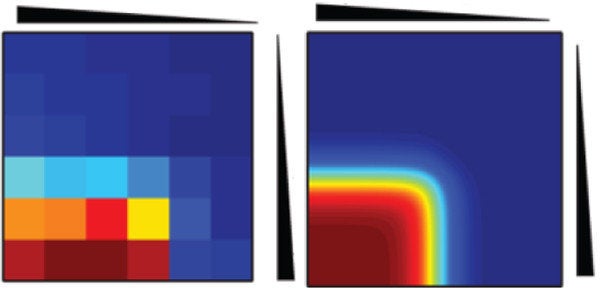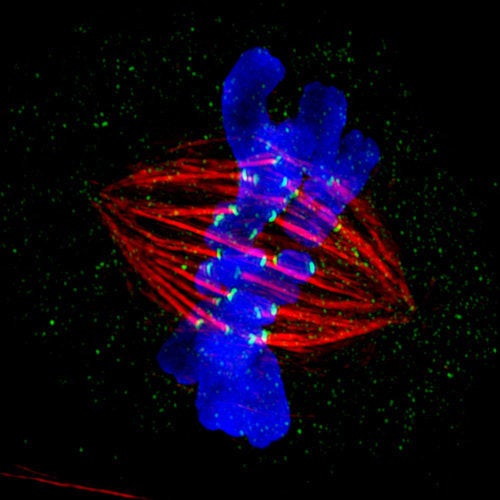
By Robert F. Service
For the first time, synthetic biologists have created a genetic device that mimics one of the widgets on which all of modern electronics is based, the three-terminal transistor. Like standard electronic transistors, the new biological transistor is expected to work in many different biological circuit designs. Together with other advances in crafting genetic circuitry, that should make it easier for scientists to program cells to do everything from monitor pollutants and the progression of disease to turning on the output of medicines and biofuels.
Researchers have already made impressive strides over the last decade in mimicking the behavior of electronic circuitry using DNA, RNA, and proteins. But often these devices tend to work only in the precise setting for which they were designed, such as turning up the expression of one particular gene in response to detecting a specific input signal.
Drew Endy, a synthetic biologist at Stanford University in Palo Alto, California, and his colleagues have been looking for an approach that could be more broadly applicable, in the same manner that an electronic transistor can be wired into numerous different circuit patterns to carry out myriad different functions. So they decided to use biology to mimic the most common type of electronic transistor. A transistor is essentially an electronic switch with three terminals or electrodes. A relatively small input of electrons flowing into a control electrode, called the gate, opens an electronic doorway, allowing a larger electrical current to flow between two other electrodes, known as the source and drain. This signal amplification can feed numerous downstream transistors enabling further logical operations to occur. Endy and his colleagues reasoned that amplification could help future genetic circuitry designs as well, because biological signals often quickly die out as weak molecular signals often get swamped by other molecular "noise" inside a cell.
At the heart of the new biological transistors, which Endy's team calls "transcriptor," are three components: an engineered DNA strand; RNA polymerase (RNA-P), an enzyme that travels along DNA and copies it into RNA; and proteins called integrases that are capable of cutting and pasting DNA. The DNA acts like a wire, Endy says. But instead of controlling how electrons flow down the wire, the team uses the integrases (the gate) to control how many molecules of RNA-P (the electrons) travel down the DNA strand, they report online today in Science.
To do so, in the middle of the DNA strand, they place a short DNA snippet called a "terminator" that kicks RNA-P molecules off the DNA. The key is that the terminator kicks off RNA-P only when RNA-P is traveling in one direction; say from left to right, but not from right to left. The Stanford team then uses the integrators to cut out the terminator DNA snippet that's in the middle of the longer DNA strand, turn it around, and then reinsert it. That means as the RNA-P travels down the DNA strand from left to right, it no longer recognizes the terminator. So it stays attached to the DNA and continues its transcription to RNA. Thus, the signal is turned on. In this case, if the RNA-Ps make it to the end point, they transcribe the gene for green fluorescent protein, lighting up the cell. Flip the terminator again and the RNA-P is kicked off, and the light turns off.
The Stanford team then showed that they could line up multiple transcriptors to carry out logical functions, creating standard logical circuits called AND gates, OR gates, XOR gates, and so on, which combine signals according to certain rules. (A computer's processor is a vast assemblage of such gates.) They also showed that their novel biological circuit designs were adept at producing signals with large amplification and that they could be used to up the expression of a variety of genes, such as the production of fluorescent signals that made it simple to detect cells that were carrying out their programming.
The Stanford team isn't the first to use integrases, DNA, and RNA-P to build circuitry. In February, a team led by synthetic biologist Timothy Lu of the Massachusetts Institute of Technology in Cambridge reported in Nature Biotechnology that they had used a similar strategy to carry out complex cellular logic and memory functions. But Lu says that "Drew's paper is really exciting" because it demonstrates that the strategy can be used to amplify signals. That could be helpful in designing novel cellular circuitry to detect small molecular signals that might indicate the presence of a disease and create a large output signal that can be easily detected.
